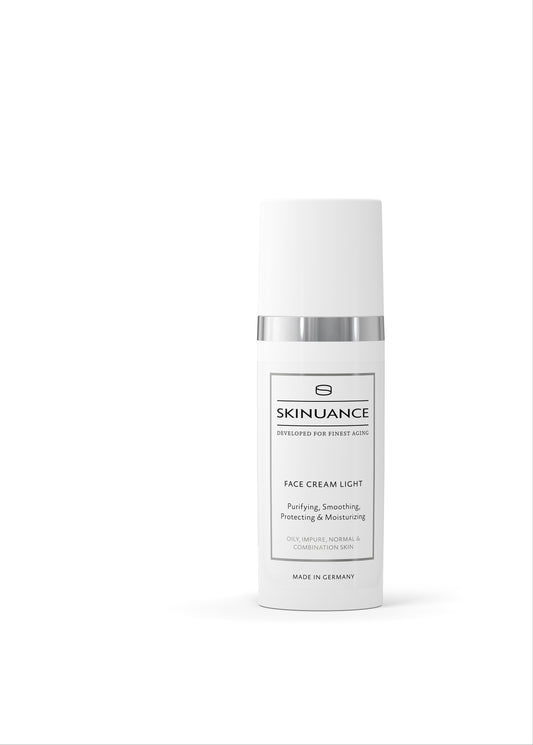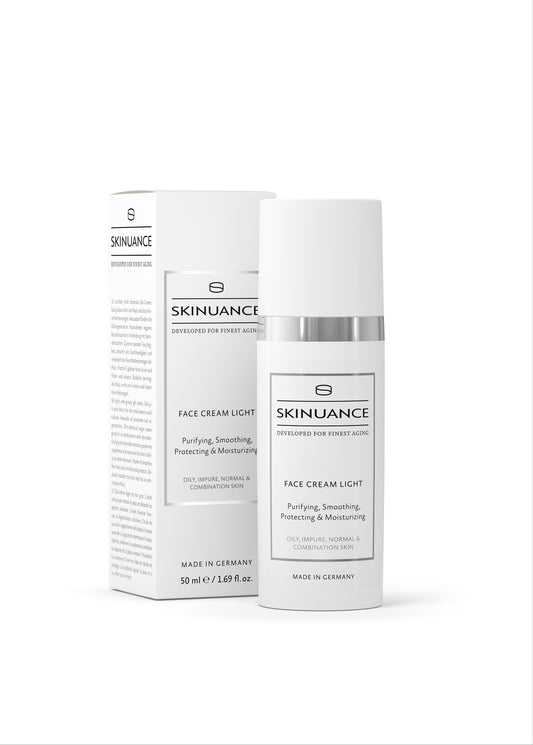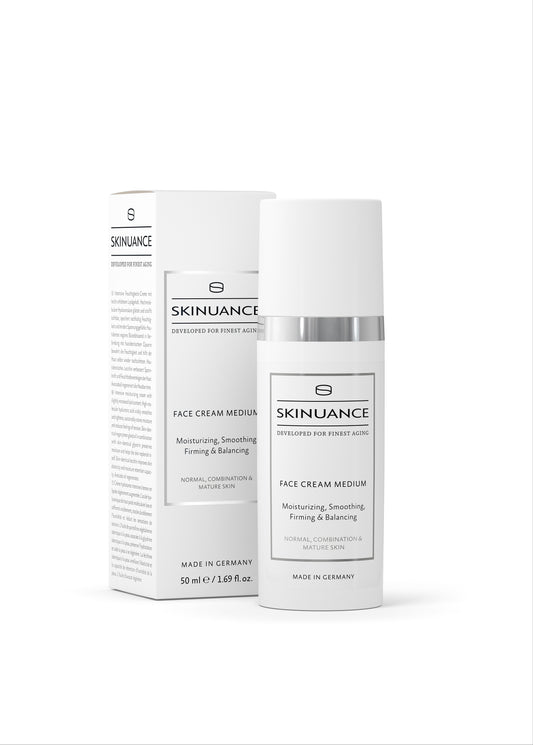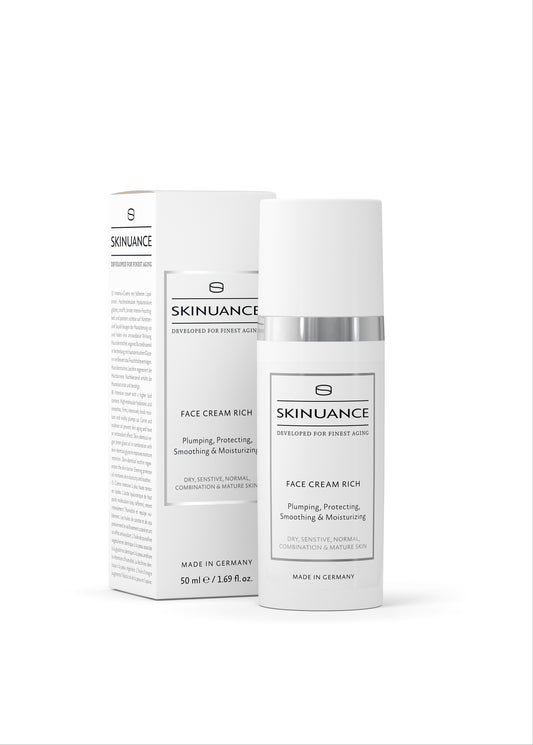What skin types are distinguished?
How sensitive you are to environmental factors, cold and heat, or hormonal changes largely depends on your skin type. Even though the microbiome is as unique as a fingerprint or your DNA, five skin types can be distinguished.
- Dry skin: Feelings of tension, skin flakes, and rough patches, for example on the elbows or face, are typical for dry skin.
- Sensitive skin: Similar to dry skin, sensitive skin can also experience feelings of tension and rough patches. Sensitive skin is additionally characterized by redness, itching, or reactive inflammation to environmental factors or certain products.
- Oily skin: Enlarged pores and increased shine are signs of oily skin. Sebum production is highest here. Therefore, oily skin can easily lead to clogged pores and inflammation.
- Combination skin: The T-zone shines particularly with combination skin. While the cheeks feel rather dry and normal, the forehead, nose, and chin have an oily shine.
- Normal skin: It is the ideal state of the skin. Normal skin has an even texture and color. It is neither dry nor oily and shows no sensitivities.
How do you determine your skin type?
After this visual test about your skin condition, there are still some options to determine your skin type. The most well-known is the blotting paper test. Additionally, there is the touch test to identify your skin type.
Blotting paper test to determine your skin

Press a blotting paper on your face in the morning before your beauty routine! Make sure to reach every area!
- Dry skin: There is hardly any oil visible on the blotting paper. This indicates low sebum production.
- Sensitive skin: It reacts similarly to dry skin in the blotting paper test.
- Oily skin: Oily residues are visible on all areas of the blotting paper.
- Combination skin: You see oily residues in the T-zone (forehead, nose, chin).
- Normal skin: There are hardly any oily residues present. There is neither an excess nor a deficiency of sebum.
Touch test to recognize your skin type
The touch test can also provide insight into the condition of your skin.
- Dry skin: The skin feels rough or flaky and tight.
- Sensitive skin: It feels dry and may react to touch. There are redness or irritations present.
- Oily skin: The skin feels oily all over the face.
- Combination skin: The skin feels oily in the T-zone, while it is normal or dry on the cheeks.
- Normal skin: It feels neither dry nor oily.
What care suits which skin type?
One of the most important products for your beauty routine is a high-quality day cream. It should be precisely tailored to your individual skin type.
- For the care of oily, blemished skin and combination skin, our SKINUANCE® FACE CREAM LIGHT is suitable. It nourishes and soothes the skin with the nourishing ingredients avocado oil, chamomile extract, panthenol, and vitamin E, and a light gel-cream texture. The day cream and/or night cream counteracts irritations and redness, gently clarifies impurities while providing care, and keeps the skin wonderfully supple.
- For normal, sensitive, mature skin and combination skin, the SKINUANCE® FACE CREAM MEDIUM is suitable. The oil-in-water emulsion provides intensive moisture, smooths and firms the skin, and reduces feelings of tension. The high-molecular skin-identical hyaluronic acid binds water and provides an immediate visible smoothing effect.
- For all skin types that need a little more care, the FACE CREAM RICH from SKINUANCE® is suitable. It is a rich and creamy intensive cream that plumps the skin with an increased lipid content. The skin-identical high-molecular hyaluronic acid provides long-lasting moisture. Lines and wrinkles are immediately softened.
Do you want a beauty routine that really suits you? Then order your suitable FACE CREAM from SKINUANCE® right now!







